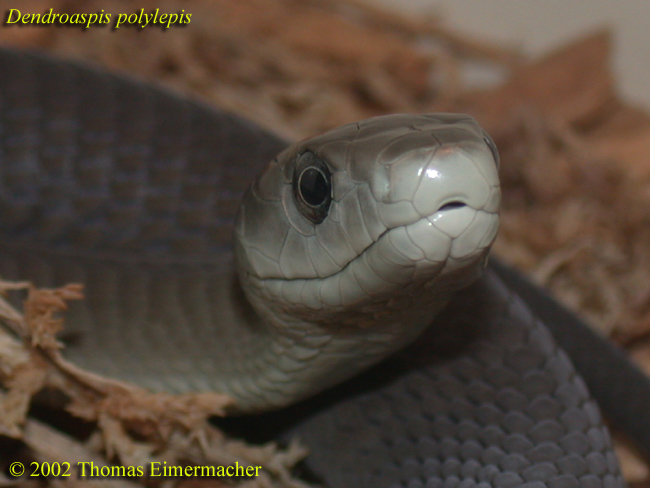
The venom of
Dendroaspis polylepis contains mostly highly potent neurotoxins, including dendrotoxins and fasciculins. Dendrotoxins are homologous polypeptides, which facilitate the release of acetylcholine at the neuromuscular junction and selectively block some voltage-dependent K+ channels (transmembrane channels essential for neuroanal transmission) in nerve endings. They are furthermore known to be potent inducers of epilepsy and convulsions in the central nervous system. Dendrotoxins are presynaptic in action, causing an initial stimulation, then blockade, and finally flaccid paralysis.
Fasciculins are also presynaptic neurotoxins, and are potent inhibitors of cholinesterases. They are synergistic with the dendrotoxins in a highly effective and rather fascinating manner. The fasciculins increase the release of acetylcholine, while the dendrotoxins prevent its metabolism, together greatly increasing the quantity of acetylcholine swamping the acetylcholine receptors on the muscle end plate.
Regarding the cardiotoxins (there are no reports of hemotoxic activity in mamba venom), van Aswegen et al (1996) did a study investigating the putative cardiotoxicity of the venoms of
D.angusticeps, D.jamesoni, and
D.polylepis, with the conclusion that while there is evidence that mamba venoms have a specific effect on isolated myocytes (of guinea pig), it is doubtful that it will have a profound influence on a human heart in case of envenomation.
Hope this helps.
Regards,
---Nightflight99



